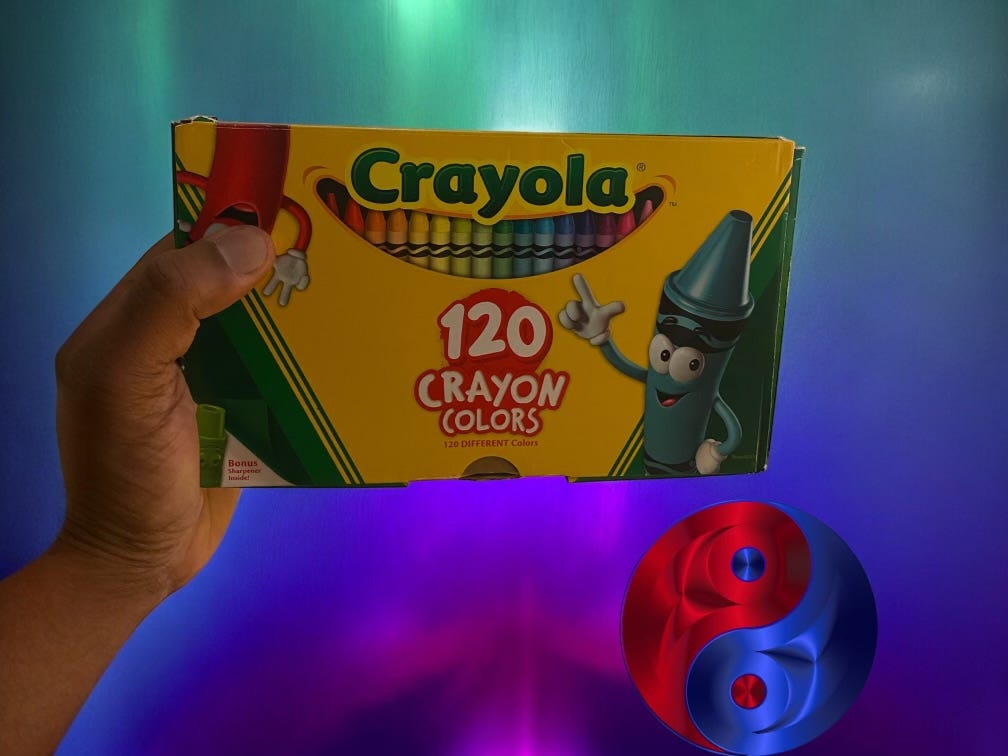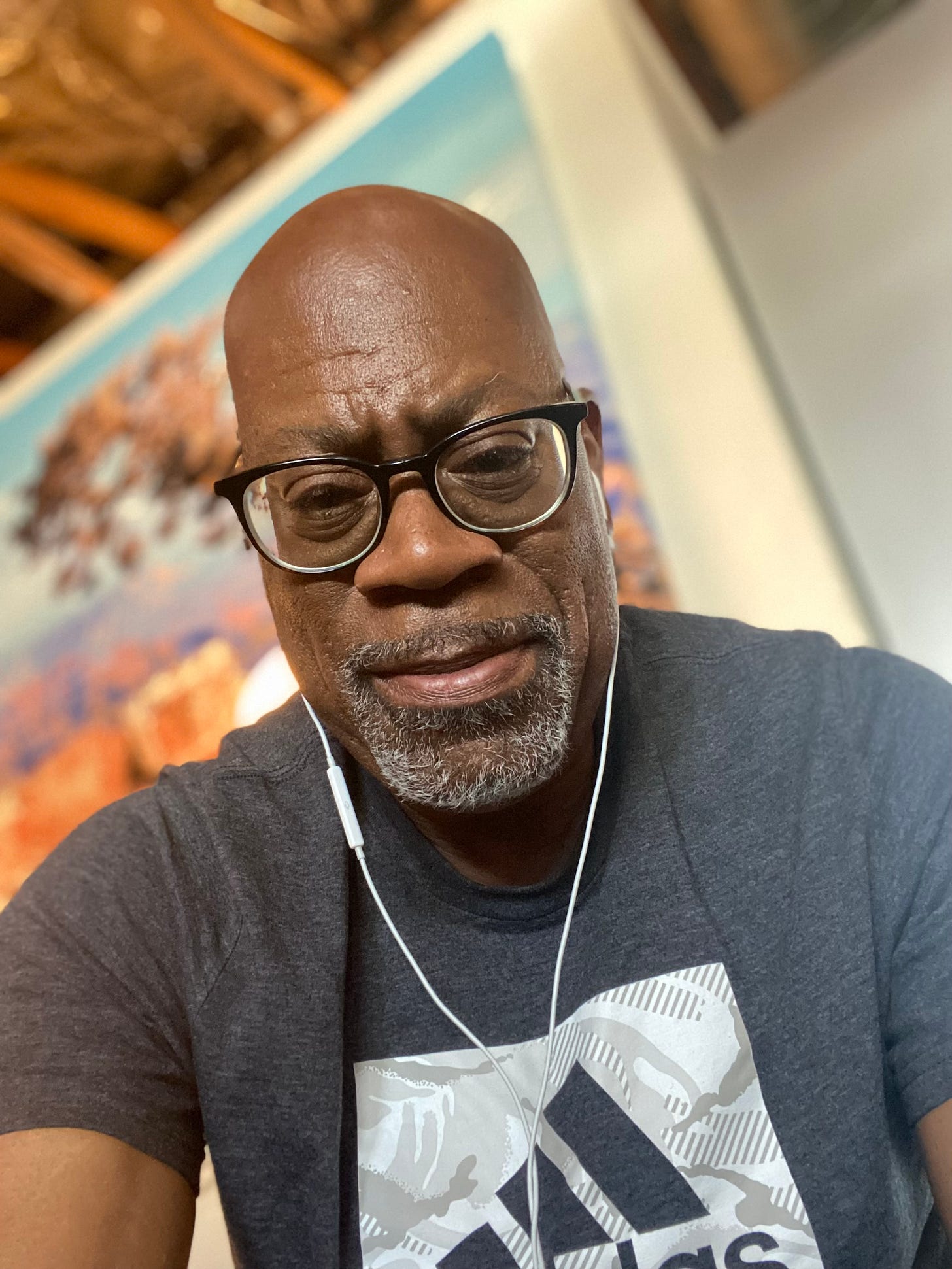I want you to open a box of crayons—really open it. Not just with your fingers, but with your breath, your senses, your stillness.
What you’re holding is not just a collection of colored wax sticks, but a microcosmic expression of the Tao….
……spontaneous, unpredictable, full of becoming.
One might say it’s the Tao in cardboard—because within that spectrum of hues lies the dance of all things.
The Tao Te Ching tells us, “The Tao that can be spoken is not the eternal Tao… The nameless is the beginning of heaven and earth. The named is the mother of ten thousand things.”
So what are colors if not the named expressions of the nameless light? Magenta, ochre, burnt sienna—just attempts to catch the ineffable on the tip of a crayon. Each color a temporary form, each stroke a fleeting echo of something eternal.
Crayons, like me, don’t try to be anything other than what they are. It is in that simplicity that they echo the Tao itself.
Hexagrams and Hues: What the I Ching Reveals
The I Ching, or Book of Changes, doesn’t speak directly about color—but it pulses with the same energetic shifts that color evokes. Hexagram 1, The Creative, and Hexagram 2, The Receptive, are black and white in form, but behind them are a full spectrum of potential expressions. The I Ching is a book of transformation. So is color.
A child with a crayon doesn’t know yet that “blue” is calming or “red” is passionate. They just feel it. Like the hexagrams, colors aren’t fixed—they morph with context.
The same yellow that brings joy in a sunlit drawing can bring unease in a caution sign. Taoist wisdom reminds us that the value of anything is not inherent—but found in its use, its timing, its presence within a larger whole.
In that way, each color is a hexagram, waiting to reveal its lesson.
Mencius and the Moral Spectrum
Although not purely Taoist, the Confucian-Taoist thinker Mencius believed in the innate goodness and unfolding of human nature, often using metaphor rooted in natural imagery. Were he to sit with us and a box of crayons, Mencius might say something like: “Within each person is the sprout of virtue, just as within each color is the potential for harmony or disarray, depending on the artist’s heart.”
Colors are morally neutral, just like human emotions. But how we arrange them, how we blend or clash them, reveals the inner life. Taoist living doesn’t judge color. It flows with it. A wild, chaotic crayon sketch from a stormy soul has as much Tao in it as a perfectly rendered lotus.
The Tao accepts all hues, just as it accepts all seasons of the spirit.
Coloring Outside the Lines of Certainty
The paradox of color is this…. it’s both real and an illusion. Light waves, refractions, brain chemistry, but also feeling, memory, and symbol.
A single color can trigger nostalgia, grief, serenity. Like the Tao, it eludes strict definition. Try to pin it down and it slips into shadow. Try to box it in, and it bleeds past the edges.
“He who knows does not speak. He who speaks does not know,” says the Tao Te Ching. Color is the same—it speaks in silence. You don’t describe red. You feel it. You don’t analyze indigo. You let it wash over you. The Tao is not about fixing life but flowing through it. So too, with color.
Living a Taoistic Life with Color
So how do we incorporate this into our lives? Start by seeing color, not just naming it. Don’t just wear blue—feel the softness or boldness of that shade in your day. Let color guide your cooking, your movement, your rituals. Light a candle not just for scent but for hue. Choose your daily crayon—not with logic, but with intuition.
Ask, “what color is my mood today?” What does my soul want to wear, to draw, to eat? Trust that impulse. The Tao flows where it flows. You are not here to force a palette—but to become one.
As Lao Tzu might have said, had he been holding a crayon:
“Yield to the spectrum. The way forward is not black or white. It is wild, radiant, and full of shades.”
And maybe, just maybe, it’s time you colored something not for perfection… but for liberation.
🎨 What colors are trying to speak through you—but you’ve been too afraid, too orderly, or too grown-up to let them?
🎨 If the Tao were to choose your palette today, would you still reach for the same shades—or would you finally let chaos color outside the lines?
Until our next coloring session…
Diamond-Michael aka The Chocolate Taoist
— unfiltered, unbranded, unapologetically alive




What is your favorite translation of the I Ching? I really enjoy Master Alfred Huang's.
When reading your post, indigo and magenta spoke to me, Diamond-Michael. I love colour, and when painting find expression to things that words can't touch.